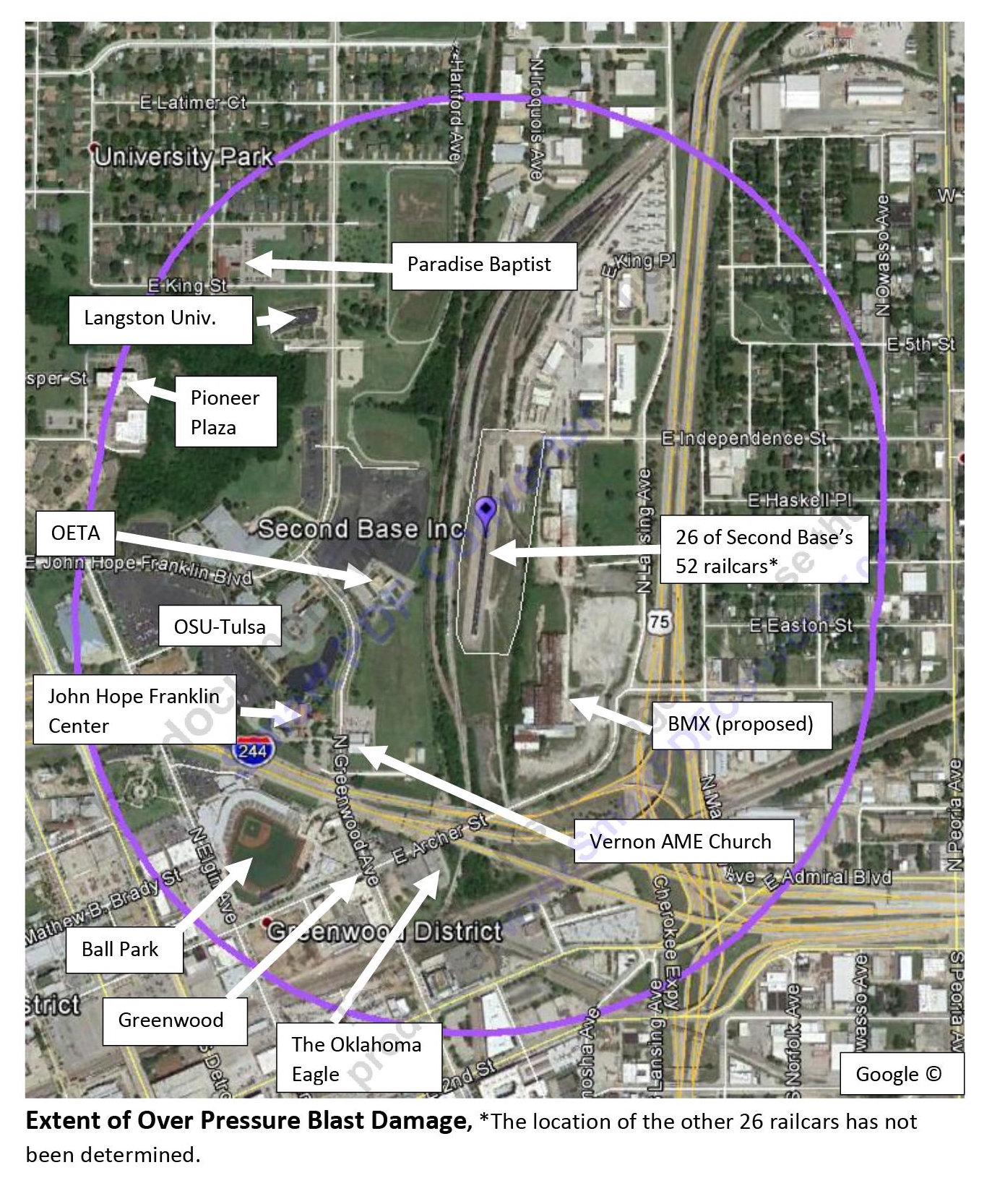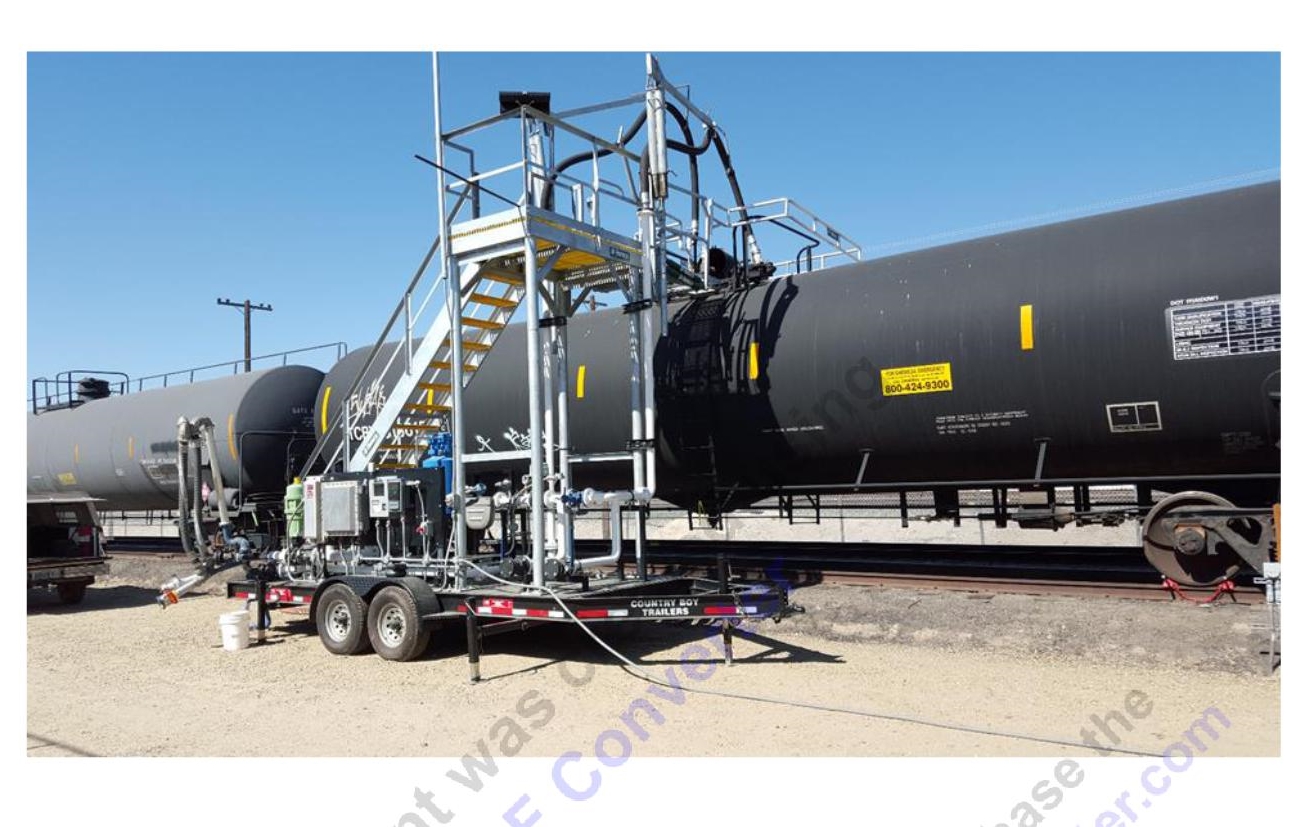
By Eagle Newswire

As much as 7.5 million pounds of flammable butane is stored in Tulsa north for transfer from 52 train railcars to trucks. Butane, most familiar for cigarette lighters is a hazardous liquified gas that can form large vapor clouds and result in free air explosions that damage structures and burn skin.
The Houston Chronicle has established a website which provides access to reports of hazardous materials filed with the U.S. Environmental Protection Agency. A report dated April 28, 2015 made by Second Base, Inc. describes the facility located at 800 East Independence Street, Tulsa, Okla.
The Houston Chronicle’s website was used to determine the quantity of butane stored in railcars and the number of railcars involved. One railcar contains 144,200 pounds of butane, enough to fill 14 million BIC cigarette lighters.
The website www.epa.gov/rmp/rmpcomp was then used to calculate the effect of a vapor cloud explosion. The EPA’s computer program presents the result of a “worst-case” release and corresponding metrological conditions, as such, it is not likely to occur. Nevertheless, unlikely events do occur and there is a long list of deadly butane vapor explosions.
Though they were limited to model the release from a single railcar but, it is recognized that a cascading event could occur which would involve other railcars.
The EPA website calculates the distance a blast over pressure wave would reach resulting in “…potentially serious injuries to people from flying glass, falling debris, and other explosion effects.” The blast reach, 0.4 miles, represents the edge of the damage, greater damage would result closer to the event.
Over 100 homes could be impacted as well as the Greenwood District, the Driller stadium, Vernon AME Church, Paradise Baptist, Langston University, OSU Tulsa, many apartments, etc.
Butane Path – In and Out
After passing through downtown Tulsa the railcars carrying Butane pass within 75 feet of The Oklahoma Eagle office and cross Archer Street at the Southern Kansas Oklahoma Railroad uncontrolled grade crossing. The railcars can be identified by the red diamond placard used for Propane, Butane, or Liquid Petroleum Gas, one on each side and one on each end.
Tank trucks belonging to ACORD Transport haul the Butane north on Lansing Street past EMSA and the Morton Health Center, to Pine Street then west past Carver Middle School to the L.L. Tisdale Parkway. Going south on the Tisdale they end up in Glenpool.
Butane in transit is also a hazard but the hazard assessment tools provided by the U.S. EPA are not directly applicable and regulatory responsibility falls to the U.S. Department of Transportation.
BMX
The proposed U.S.A. BMX facility is immediately east of the Second Base railcars, just over the fence.
City’s Dilemma
How approval of the Second Base facility got past the City planners and the Fire Department is a mystery from the Bartlett administration. The administration of Mayor GT Bynum is now tasked with its removal, a black cloud hanging over the neighborhood and a block on further development of public uses such as the proposed BMX facility.










